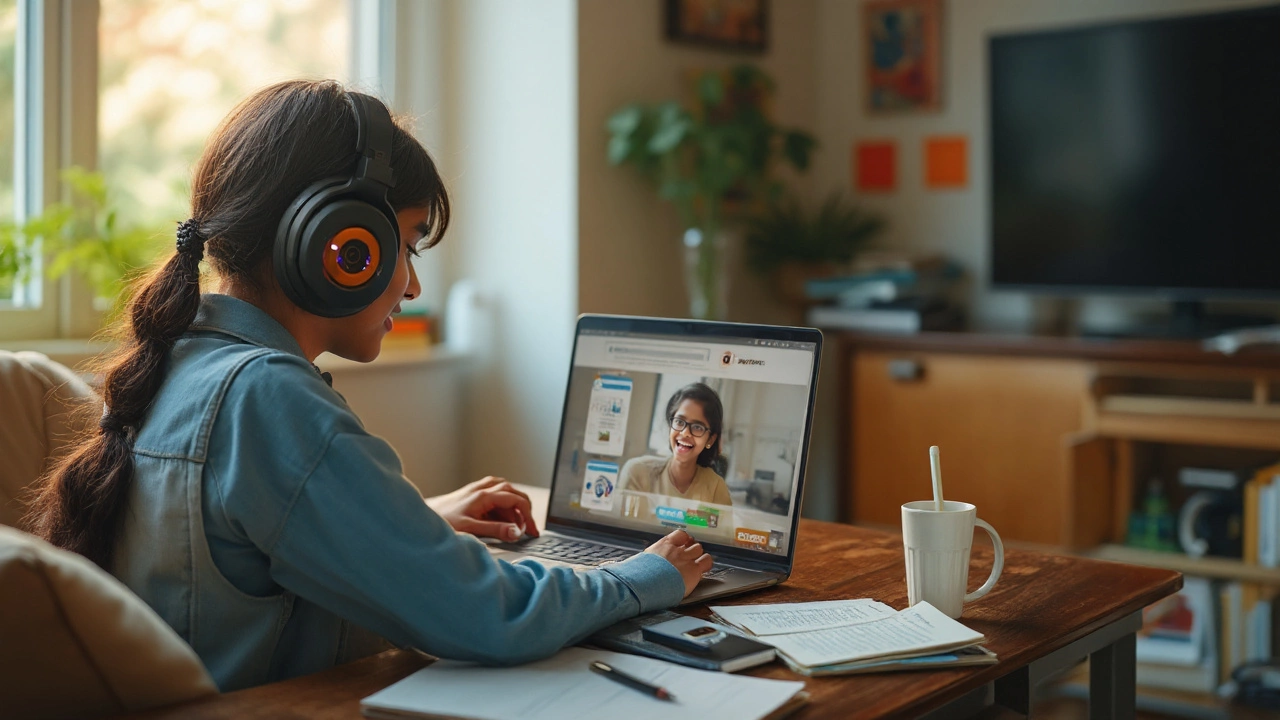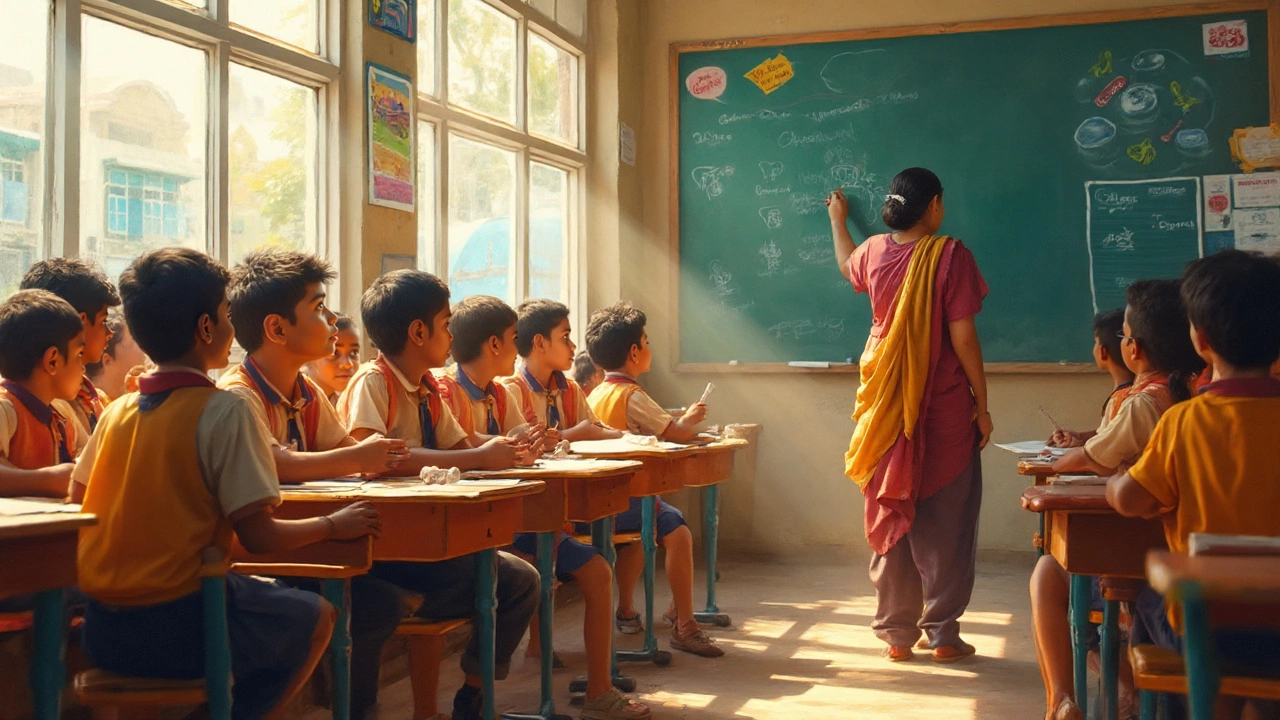Imagine sitting in a classroom, fluorescent lights humming above, your teacher writing notes on the board, and that faint crinkle of notebook paper all around. Now imagine logging into an online platform in your pajamas, with a hot drink in hand, maybe a playlist running in the background. Wildly different vibes, right? The debate between traditional classroom learning and eLearning isn’t new, but it’s getting more personal and complicated as technology keeps transforming how we learn and work. The lines keep blurring, making it easy to wonder: what are the real, practical differences between these two ways of learning? Why does the gap matter for students, teachers, and even parents?
How Classroom Learning Shapes Experience and Growth
Classroom learning is as old as chalk and blackboards, literally. What stands out here isn’t just about sitting at desks—it’s about socializing, asking instant questions, and that subtle peer pressure that pushes you to pay attention even when you’d rather nap. Take group projects: when you tackle a science experiment with classmates, you navigate personalities, learn negotiation, and sometimes even discover leadership skills you didn’t know you had. Some real college classrooms, like those at the University of Delhi, have reported that peer learning in physical settings bumps up exam scores by as much as 17%.
You’re not just absorbing facts—you’re picking up body language, teamwork, and communication skills that are almost impossible to replicate online. Teachers also spot when you’re struggling just by your facial expressions. That’s why, even in 2025, forward-thinking international schools and top Indian institutes still keep physical classes at the core, especially for young students and hands-on subjects like chemistry or drama.
Even the structure of the day makes a difference. With set timetables, the familiar bell, and regular face-to-face feedback, students get a rhythm—a built-in routine that not only helps in studying but also in managing time. Wonder why so many offices mimic this style? Because humans thrive on routines, even if we complain.
On the downside, classroom learning isn’t always fair. Students might live far from schools, possibly spending hours stuck in traffic or navigating public transport. Classrooms get crowded, and shy students often fade into the wallpaper. A student at Jamia Millia Islamia once joked that her biggest fear wasn’t the syllabus—it was raising her hand in front of sixty other people. And let’s be honest, if you miss important classes because you’re sick or dealing with family issues, catching up can become a nightmare.
The cost can climb too. Uniforms, commutes, and add-ons like lunches or field trips all stack up. Schools with better facilities, smaller classes, or more resources come with a bigger price tag, leaving some students behind just because of where they live or what their parents earn.
The flip side? You get instant camaraderie—a sense of belonging that can spark lifelong friendships. Don’t forget all the silly traditions, chaotic sports days, and little moments that stick with you long after you’ve forgotten what the Pythagorean theorem even was.
What Makes eLearning a Game Changer?
eLearning smashes the walls of the classroom, letting anyone access education almost anywhere, any time. Can you believe over 280 million learners worldwide took at least one online course on platforms like Coursera or Khan Academy in just this past year? Not all needed laptops—some managed with only smartphones and patchy internet, which says a lot about the reach and flexibility.
With digital courses, you’re suddenly in charge. Want to learn at midnight after your work shift? Go for it. Did the teacher go too fast? Just rewind the lecture. This flexibility rescues students who can’t attend school due to health, location, or even tricky family schedule stuff. For adults juggling jobs and parenthood, eLearning is often the only shot at higher education or upskilling. Check out the Indian National Digital Library: working moms in remote villages stream physics lessons while cooking breakfast—that just can’t happen with brick-and-mortar schools.
What’s wild is how interactive eLearning can be. Think gamified quizzes, instant polls, and smart chatbots that answer questions at 2 a.m. You get dashboards tracking your progress, and AI-driven feedback that can spot if you’re stuck repeated times on a tough concept. There’s no waiting for next week’s parent-teacher meeting—results are there in a tap, sometimes with graphs or insights that help you change study strategies.
Here’s a tip: don’t treat eLearning like binge-watching shows. Set a dedicated time and quiet spot—studies from IGNOU found students (even adults!) who log in at the same time daily score up to 23% higher in assignments than those who keep it random. Add reminders, keep notes, and don’t multitask with social media. Digital distractions are real.
But there are still hurdles. Not everyone has blazing fast internet or fancy smartphones. Some students—especially younger ones—struggle to stay motivated when there’s no teacher walking by or friends to nudge. And online fatigue is real: too much screen time can leave you restless or even anxious. In fact, a 2024 study in Bengaluru found almost 41% of older school kids reported trouble sleeping after back-to-back online classes. And practical subjects that need lab tools or live discussion? eLearning still hasn’t cracked that code 100%.
Even so, the global push toward hybrid workplaces and digital skills means eLearning’s only growing. Having a certificate from a top international university through a quick online program is totally doable—no flight tickets or visas required.
| Feature | Classroom Learning | eLearning |
|---|---|---|
| Accessibility | Depends on location, schedules | Anytime, anywhere (with internet/device) |
| Social Interaction | High (face-to-face, real-time) | Low/Moderate (forums, video calls) |
| Cost | Often higher (fees, transport, supplies) | Usually lower (sometimes free resources) |
| Pace of Learning | Fixed/Teacher-led | Self-paced |
| Feedback | Immediate, personal, in real-time | Automated, sometimes delayed, less personal |
| Hands-on Activities | Easy, real-life experiments | Challenging, needs virtual labs or kits |
| Peer Learning | Natural, through group work and interaction | Needs structured virtual interaction |
| Distraction | Physical distractions (talking, environment) | Digital distractions (apps, social media) |

Comparing Student Engagement, Results, and Wellbeing
When it comes to engagement, classroom learning wins if you value conversation, debate, and those “aha!” moments sparked by group energy. Teachers can switch gears if a class looks lost or bring stories to life with demonstrations on the spot. There’s a reason universities like Oxford still build discussions and group tutorials into their top courses—they know live sparks beat cold screens when it comes to tricky, creative topics.
But eLearning fights back with its tools. Instant quizzes, AI tutors, flashy animations, or even mini-games that break concepts into five-minute chunks grab attention big-time, especially for digital-first teens and adults who’ve grown up on YouTube shorts and endless feeds. There are students who claim they find even calculus videos “more addictive than reels” when platforms add leaderboards and quick feedback loops.
The numbers speak. According to UNESCO, high school students who combine both online and in-person learning (also known as hybrid or blended learning) report the highest satisfaction and improved exam scores—sometimes 10 to 28% higher—especially for theoretical subjects. But here’s the catch: when schools switched purely to eLearning during pandemic lockdowns, student performance gaps grew, mostly for those without good internet or a quiet home space. Motivation tanked when there wasn’t anyone cheering them on or checking their work in person.
Wellbeing is a whole different story. Classroom routines mean built-in structure, reliable mealtimes, exercise during breaks, and—most importantly—social support. For many kids (and some adults too!), friends made in class are their lifelines during stressful years. Mental health experts at NIMHANS found that students who return to some form of in-person class after months of digital learning show rapid improvements in mood and stress reduction. On the other hand, eLearning is a lifeline for those bullied in school or with unique needs; online communities can be safer, and nobody judges what you wear to class.
Self-discipline is another hot button. In a physical classroom, simply being watched by teachers or classmates is enough to keep most people on track. Online? It comes down to self-management and good old reminders. I recommend using calendar alerts, keeping your workspace separate—no couches or beds if possible—and scheduling time for breaks to keep burnout at bay.
Got kids? Don’t leave them unsupervised during eLearning. A Delhi Public School survey showed that primary students left alone with e-classes for over six hours a day scored lower and reported feeling isolated compared to those whose parents checked in or who did regular group video sessions with friends.
Tips to Pick the Best of Both Worlds, and Common Myths Busted
Let’s clear up a giant myth: eLearning isn’t lazier or “easier.” It just shifts power into the student’s hands. Sure, there’s flexibility, but there’s also nowhere to hide—no teacher to nudge you each minute. It’s a test of willpower and time management, not just brains.
If you’re picking between classroom learning and eLearning, ask yourself three things: what are you hoping to learn, how do you best stay focused, and what resources (devices, time, quiet space) can you count on? Not everyone gets a choice, but those who blend both find they learn more and stress less. See if your school or college offers hybrid courses—combine in-person discussion or labs with digital modules so you can review tough topics at your own speed at home.
For those taking eLearning, block out your study times on your phone calendar, and log out of distracting websites before each session. Reward yourself with something you love after a productive study block. Want accountability? Team up with a friend and check in after every completed module—peer pressure isn’t always bad!
Don’t dismiss microlearning—short, focused bursts over longer marathons. Research from Mumbai University found students who studied in 25-minute sprints with 5-minute breaks finished online modules 31% faster than those going for hours straight.
Classroom learners, push yourself beyond just note-taking: ask your teacher for practical tips, extra challenges, or even small debates. Try to turn boring lectures into games among classmates, or set aside time after class to explain a concept to a friend—you’ll remember it way better.
Avoid falling for the “one-size-fits-all” story. A student excelling in a bustling classroom may struggle to stay awake during an online video, while another thrives alone at their own pace online but freezes up when quizzed in person. Both journeys are valid and it’s perfectly okay to switch between them depending on your needs each year.
The big takeaway? There’s no automatic winner. Classroom learning and eLearning both have unique strengths—sometimes the blend is what gives you the edge. The smartest students use every resource, from asking questions in person to searching up videos online when they don’t get something the first time. Don’t be afraid to experiment until you find the mix that fits your goals and life best.
